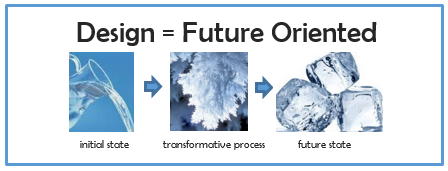Working with the end in mind – Solution Envisioning the Sure Step way
Sherryl Gibbs, 22 May 2015
In comparing Sure Step with what I know of SDLC (software development lifecycle), what stands out is the addition of a Diagnostic phase or what Microsoft refers to as Solution Envisioning, which pre-empts the core project lifecycle called Solution Implementation & Upgrade.
After delving deeper into this phase, however, now I can actually appreciate how this can, in fact, add value to the whole engagement itself. In a sense, it is like laying a solid foundation for which the deliverable solution will stand on. Just as its name suggests, this diagnostic phase will help envision what the end product ought to look like.
What happens in Solution Envisioning?
According to Sure Step, the Diagnostic phase starts "by establishing the purpose and objectives of the potential engagement. This includes creating an understanding of the customer's current situation, business environment, and the main pain points or areas of improvement, that have been identified. Information regarding current and future state is gathered in order to determine the scope of the Diagnostic phase and to identify the appropriate skill sets and resources required for the Diagnostic activities."

Sounds familiar? This definition does sound like it's describing requirements elicitation, which is part of the Analysis phase of the project lifecycle. So is there really a need for this extra step?
What value does Solution Envisioning offer?
Not all businesses, regardless if they are small, medium, or large-scale enterprises, have their own Project Management Office (PMO) or even at the least, a set of in-house business analysts (BAs). Typically, the tasks done within this diagnostic phase would already have been performed by an organization's business analyst even before proceeding to a request-for-proposal (RFP). Lacking this in-house expertise, an organization may opt to acquire this service offering from their elected Microsoft technology partner.
At this time, the following areas may be investigated:
- Business environment
- Organizational structure
- Vision Statement
- Key performance areas
- Business processes
- Information Services/Information Technology architecture and system landscape
- Internal and external dependencies that may have an impact on the project.
From the findings gathered from these investigations comes a recommendation for best-fit solution.
So, what are the outcomes of a Solution Envisioning engagement?
Ultimately, this diagnostic phase culminates in a system review that will be documented and presented as a road map of the solution. Then, once reviewed and approved, this can result in a Statement of Work (SOW) that is signed off by the project sponsor, which will trigger the solution delivery team to be mobilized for the next phase, Solution Implementation/Upgrade.
Solution Envisioning is an efficient and effective way of designing your solution with the end in mind.
Image References:
- Pouring water (http://questgarden.com/151/04/0/121111143035/images/pouring%20water.JPG)
- Ice crystals (http://www.cmmap.org/images/learn/clouds/iceCrystalImg6.jpg)
- Three ice cubes (http://thewhiskeychicks.com/wp-content/uploads/2014/01/ice-cube.jpg)

